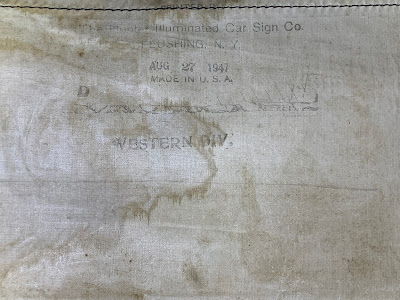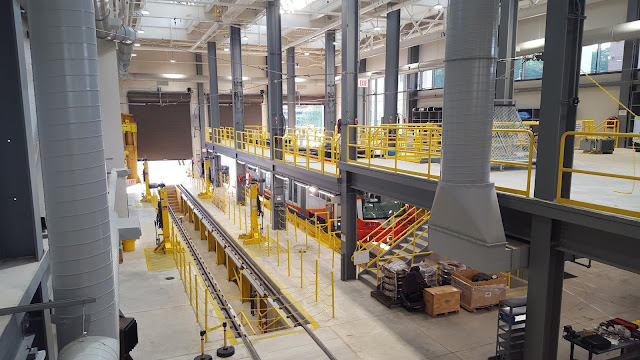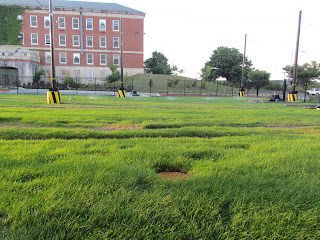Washington, Baltimore and Annapolis Electric Railroad
Prior to the DC Metro, prior to Amtrak's Northeast Corridor high-speed rail service, prior to MARC Commuter Rail, prior to Baltimore Light-rail Link and prior to luxury motor coaches, there was the WB&A. The cities of Washington, Baltimore and Annapolis, and many communities in between, were linked via clean, efficient, fast and state-of-the-art electric railroad interurban service - courtesy of the Washington, Baltimore and Annapolis Electric Railroad - self proclaimed "the greatest double track interurban electric railway in the world."(An interurban is defined by Merriam-Webster as "a fairly heavy but fast electric train, something between an urban trolley and a full-fledged long-distance train, that offers more frequent service than an ordinary railway.")
1908 map from a timetable of the Washington, Baltimore and Annapolis Electric Railway. The dark line labelled "AW&B RR" is the Annapolis, Washington and Baltimore Railroad, part of the WB&A. Note the presence of the Chesapeake Beach Railway (CB Ry) towards the bottom of the map.
The WB&A began operations with two lines, the Main Line from Washington to Baltimore and the Annapolis Branch (later dubbed the South Shore Line,) formerly the Annapolis, Washington and Baltimore Railroad (acquired 1903) from Annapolis Junction to Annapolis. The Baltimore and Annapolis Short Line at this point changed names to the Maryland Electric Railways Company (and more commonly known as the Annapolis Short Line), and electrified their line between Annapolis and Baltimore. It wasn't until 1921 that the Annapolis Short Line was acquired and incorporated into the WB&A system as the North Shore Line.
The WB&A could achieve speeds of 60 miles per hour on their main line between Washington and Baltimore, however their trains could not make the trip faster than the commuter services offered by the Baltimore and Ohio Railroad. The WB&A instead advertised "fast" trains, with significant emphasis on their cleanliness, frequent and dependable service and the pioneering electric technology that powered them.
In addition to their standard service between Washington, Baltimore and Annapolis, the WB&A would run special trains servicing the Naval Academy in Annapolis, Camp (Fort) Meade in Odenton and the now unused race track in Bowie.
Eventually, the increased use of automobiles hurt WB&A traffic, and the railroad slowly began a state of decline in the 1920s. August 20, 1935, was the last day of service on the WB&A; the railroad was sold at auction, with most of the equipment and infrastructure scrapped. The former North Shore Line of the WB&A was purchased by a group known as the Bondholders Protective Society, which created the Baltimore and Annapolis Railroad Company. The new Baltimore and Annapolis operated passenger trains between the two cities until 1950, after which the trains were replaced with buses - freight service on the B&A continued until 1968, when rail service ended entirely.
Few remnants of the WB&A and B&A remain today. Of the entire system, two pieces of equipment are known to survive: former WB&A freight motor number 1 and B&A diesel number 50. The freight motor is preserved at the Western Railway Museum in California (more info HERE and HERE) and the locomotive at the B&O Railroad Museum in Maryland (more info HERE). Most of the track has been torn up, with a multi-use trail occupying many portions of the old right of way. One of the WB&A's Baltimore terminals survives, as well as a few electrical substations. A couple sections of track survive in Annapolis and Odenton. Recent road construction in Annapolis revealed surviving WB&A track in Church Circle for the first time in years.
This article represents an extremely condensed history of the WB&A. The full WB&A story begins in the mid 1830s; Abraham Lincoln, Samuel Morse and Civil War encampments are all included in this extensive history. There are two books which we highly recommend for anyone interested in learning more about the WB&A:
EVERY HOUR ON THE HOUR: A CHRONICLE OF THE WASHINGTON, BALTIMORE AND ANNAPOLIS ELECTRIC RAILROAD by Lt. Col. John Merriken. **This book has been out of print for years. To our knowledge, there are no vendors that sell this book in a retail setting. Your best opportunity for obtaining a copy of this book is to search eBay and Amazon - prices vary greatly.
THE ANNAPOLIS AND ELK RIDGE RAILROAD 1837 — 1885 by Daniel Toomey and Steve Hammond. This book is available by mail order from the Anne Arrundell County Historical Society for $15 plus shipping and sales tax for Maryland residents.
The National Capital Trolley Museum is fortunate to hold a significant collection of WB&A and predecessor railroad material in our Mills Dean III Library. For this special edition of TrolleyTime, we are pleased to share a few artifacts and images from our collection and a private collection.
PLEASE NOTE: These are rare artifacts and photographs which are the property of the National Capital Trolley Museum or a private owner. Please do NOT copy or reproduce these images. We invite you to share this article by copying the article URL/link at the top of the page; please feel free to send or post the link. We appreciate your cooperation.
PHOTOGRAPHS:
Annapolis Short Line 55, built 1913. J. Merriken Collection, NCTM
Annapolis Short Line 30 at Bladen Street. J. Merriken Collection, NCTM
Baltimore terminal on Liberty Street in 1908. This building survives today Notice the size of the interurban car, inside the building, next to the man. The WB&A interurban cars were essentially full size railroad vehicles - in other words, heavy and massive. J. Merriken Collection, NCTM
The other side of the Baltimore terminal building as seen on a postcard.
WB&A interurban car and bus on grounds now occupied by the Naval Academy. J. Merriken Collection, NCTM
WB&A car crossing the Severn River. J. Merriken Collection, NCTM
Washington Terminal, January 1921. New York Avenue and 12th Street. J. Merriken Collection, NCTM
WB&A Today:
Surviving concrete bridge - the tracks originally ran on the top. The existing modern steel bridge carries the WB&A trail over the stream and bridge, and is not original to the location.
WB&A Right of Way. This image was taken from the WB&A trail - the tracks continued into the brush, roughly following the telephone poles seen at left.
Site of the WB&A's massive Academy Junction shops and yard. This site was last occupied by the Nevamar Materials Company, which used a few of the remaining WB&A shop buildings. Nevamar closed in 2004, and all of the remaining buildings, including the remaining WB&A structures, were eventually demolished. The site remains empty and abandoned, as pictured here.
WB&A substation in yellow box; top image, Maryland State Archives via annapolisrailroadhistory.com. Bottom image shows the substation today, part of the Graduate Hotel (formerly Loews) in Annapolis, via Google Maps.

































































